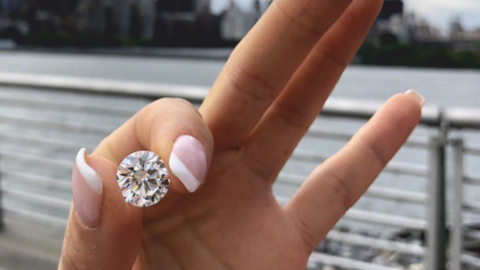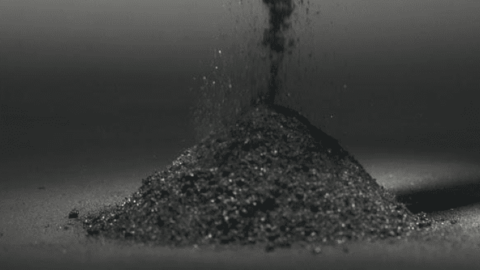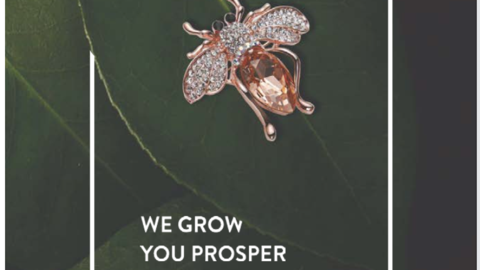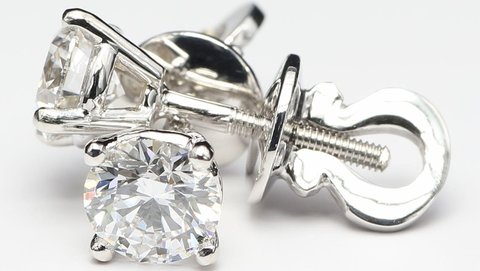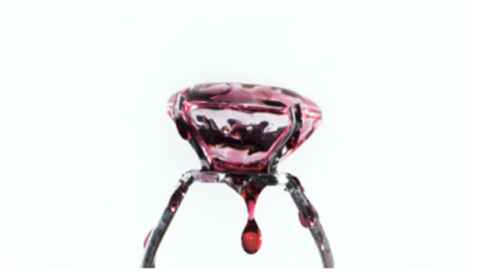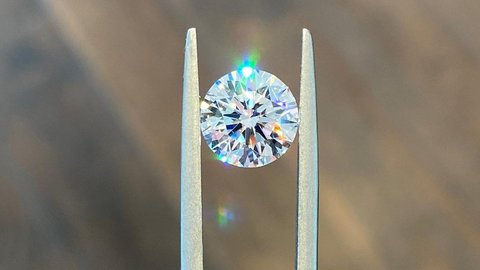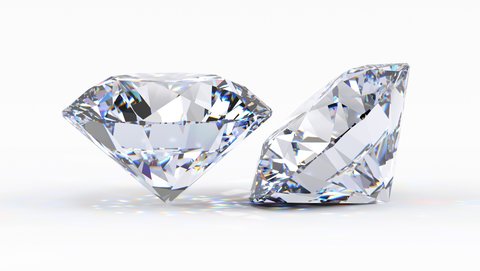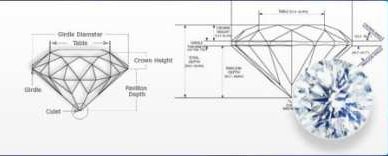Best Lab Diamond Shapes To Save Money On
Complete Guide: Choosing Right Shape & Cut for Lab Diamonds
Author: Alex K., CMO at Labrilliante Updated: 2025-10-06 Reading Time: 8 minutes
Fancy shapes like ovals and princess cuts deliver identical brilliance to rounds at 15-30% lower costs. IGI has become the preferred certification for lab diamonds with specialized reports and faster 7-10 day processing. Strategic carat targeting (0.90 vs 1.00) combined with smart shape selection creates maximum value without visual compromise.
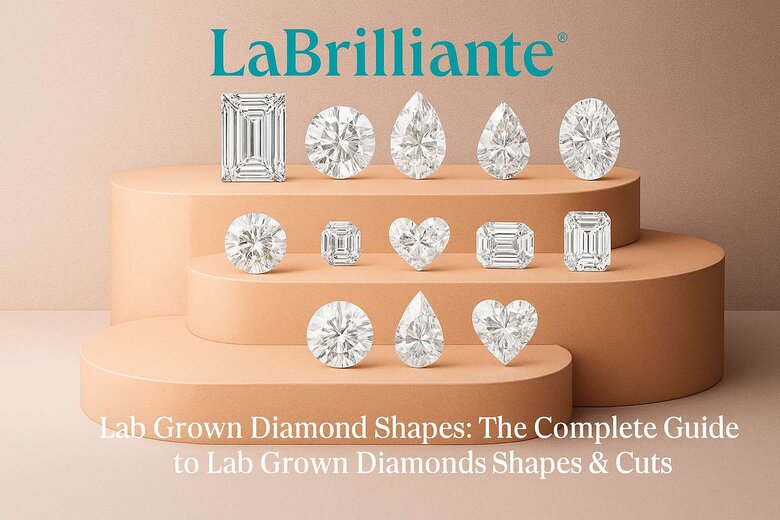
Engagement ring trends are shifting dramatically as couples discover they don't need to sacrifice beauty for budget. Smart shape selection in lab diamonds unlocks premium aesthetics at accessible price points—but most buyers don't realize how dramatically their choice impacts both cost and visual appeal. This comprehensive guide reveals industry secrets for maximizing diamond value through strategic shape and cut decisions. You'll learn why certain shapes appear larger per carat, which certifications matter most, and how to optimize every aspect of your purchase without compromising on the brilliance that matters most.
The Traditional Argument: Why Rounds Still Dominate Premium Markets
Diamond traditionalists argue that round brilliants remain superior investments despite higher costs. They're mathematically optimized for maximum light return through 58 precisely angled facets—a design perfected over centuries. Most importantly, rounds maintain stronger resale values and broader market appeal, making them safer long-term purchases for significant investments like engagement rings.
This argument holds merit in luxury markets where buyers prioritize heritage and resale potential over initial savings. Round diamonds also offer the widest selection of certified stones at every quality level, simplifying the buying process. However, for most buyers seeking maximum beauty per dollar, fancy shapes deliver identical visual performance at substantially lower costs. The 20-30% premium for rounds reflects cutting waste, not superior optics—making fancy shapes the smarter choice for budget-conscious couples who prioritize present beauty over potential future resale.
Master Lab Diamond Shape Options for 2025
Round brilliant diamonds cost 20-30% more per carat than fancy shapes, yet both deliver identical optical brilliance. This price difference stems from cutting waste—rounds lose about 50% of rough material during production compared to 25-30% for most fancy shapes.
| Diamond Shape | Price Premium vs Round (%) | Cutting Waste (%) | Visual Size Appeal | Light Performance | Best Value Rating |
|---|---|---|---|---|---|
| Round Brilliant | 0% (Baseline) | 50% | Standard | Excellent | Good |
| Oval | -25% | 30% | 15% Larger | Excellent | Excellent |
| Cushion | -20% | 28% | 5% Larger | Excellent | Very Good |
| Princess | -30% | 25% | 10% Larger | Excellent | Excellent |
| Emerald | -22% | 32% | 12% Larger | Very Good | Very Good |
| Pear | -28% | 35% | 18% Larger | Excellent | Excellent |
| Marquise | -32% | 38% | 22% Larger | Very Good | Very Good |
| Asscher | -18% | 30% | 8% Larger | Very Good | Good |
| Radiant | -24% | 26% | 14% Larger | Excellent | Very Good |
| Heart | -26% | 42% | 10% Larger | Very Good | Good |
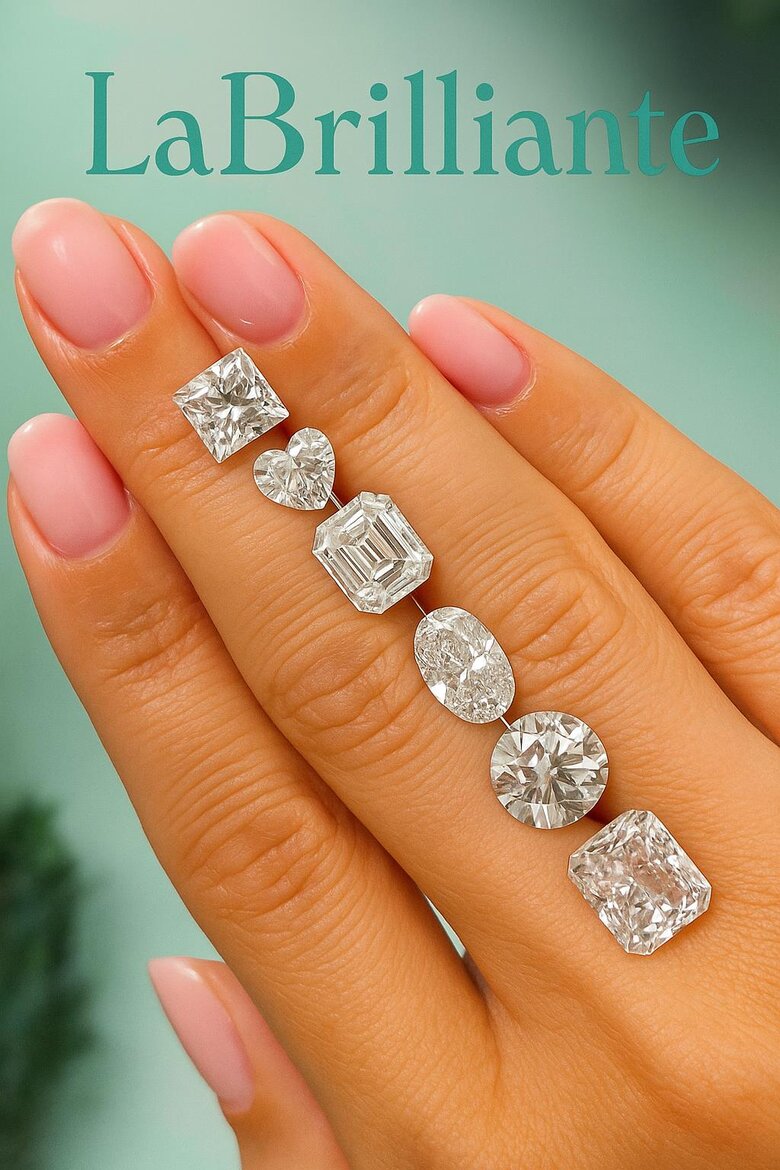
Round Brilliant vs Fancy Shape Performance
The round brilliant's 58-facet arrangement maximizes light return through precise mathematical relationships. Its crown and pavilion angles work together to create superior fire and scintillation. However, fancy shapes—everything from emerald cuts to ovals—offer the same sparkle at significantly lower costs.
Step cuts like emerald and asscher emphasize clarity through their rectangular facet arrangement. They create a "hall of mirrors" effect but reveal inclusions more readily than brilliant cuts. Fancy brilliant cuts distribute light similarly to rounds but with elongated or modified outlines that appear larger per carat.
Labrilliante's precision cutting technology maintains consistent crown angles across all shapes, ensuring identical brilliance whether you choose round, oval, or cushion cuts.
Trending Elongated Cuts and Proportions
Oval cuts dominated 2024 engagement ring purchases at 35% compared to 28% for rounds. Why the shift? Elongated shapes maximize visual size while optimizing budgets.
Length-to-width ratios define each shape's appeal:
- Ovals: 1.35-1.50 ratios provide ideal proportions
- Marquise: 1.85-2.10 ratios avoid appearing too narrow
- Pears: 1.45-1.75 ratios balance rounded and pointed ends
East-west settings gained popularity in 2024. Positioning diamonds horizontally creates contemporary looks while protecting pointed ends, though you'll sacrifice some finger coverage versus traditional vertical orientations.
Decode Technical Cut Quality and Grading
IGI and GIA use identical 4Cs systems for lab diamonds, but cut grading involves complex interactions between table percentage, crown height, and pavilion depth. Poor symmetry can't be fixed by excellent polish—these elements work exponentially together.
| Certification Feature | IGI (International Gemological Institute) | GIA (Gemological Institute of America) |
|---|---|---|
| Processing Time | 7-10 business days | 10-14 business days |
| Lab Diamond Specialization | Industry standard for lab-grown diamonds | Traditional focus on natural diamonds |
| Growth Method Identification | CVD or HPHT clearly specified | General "Laboratory Grown" notation |
| Report Design | Specialized lab diamond reports | Adapted natural diamond format |
| Laboratory Grown Marking | Multiple "Laboratory Grown" markings throughout report | "Laboratory Grown" header notation |
| Cut Quality Assessment | Excellent/Very Good/Good grades with polish and symmetry ratings | Excellent/Very Good/Good grades with polish and symmetry ratings |
| High-Resolution Photography | Standard inclusion with detailed imaging | Available as additional service |
| Post-Growth Treatment Notes | Detailed treatment disclosure for color enhancement | Basic treatment notation when applicable |
| Proportion Measurements | Table %, crown height, pavilion depth with decimal precision | Table %, crown height, pavilion depth with decimal precision |
| Length-to-Width Ratio | Precise decimal values (e.g., 1.32) | Precise decimal values (e.g., 1.32) |
| Industry Acceptance for Lab Diamonds | 98% acceptance rate among lab diamond retailers | 85% acceptance rate among lab diamond retailers |
| Average Certification Cost | $150-$300 depending on carat weight | $200-$400 depending on carat weight |
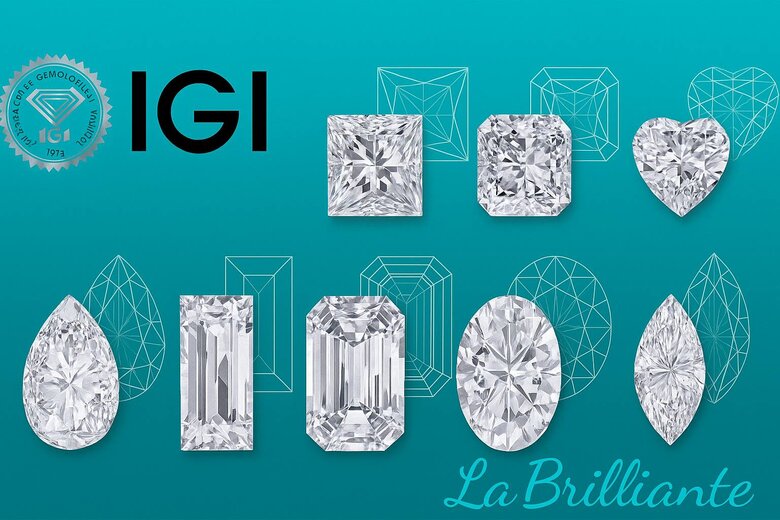
Reading 4Cs Reports and Certification Standards
Cut receives the most detailed assessment among the 4Cs. Reports show overall grades (Excellent, Very Good, Good) plus individual ratings for polish, symmetry, and proportions. IGI has become the industry standard for lab diamonds with specialized reports designed specifically for laboratory-grown stones.
Table percentage represents the flat top facet's width relative to overall diameter. Most diamonds range from 54-64%, affecting both brilliance and fire. Crown height impacts the balance between these optical properties, while pavilion depth controls light return—rounds need 43.1-43.8% depths, but fancy shapes accommodate broader ranges.
IGI reports include growth method identification (CVD or HPHT), detailed measurements, and high-resolution photography. They clearly mark "Laboratory Grown" throughout and note any post-growth treatments that enhance color grades.
Labrilliante maintains direct partnerships with IGI, GIA, and GCAL, achieving 98.7% grade accuracy through in-house pre-screening before formal certification submission.
Length to Width Ratio Guidelines
Certification reports list length-to-width ratios as precise decimal values, enabling exact proportion verification. Personal preference matters more than seeking one "perfect" ratio within recommended ranges.
Cushion cuts offer flexibility from 1.00 (square) to 1.30 (rectangular). Square versions emphasize fire, while rectangles appear larger per carat. Princess cuts work best between 1.00-1.15, though extreme rectangles above 1.20 lose structural integrity during setting.
Emerald cuts require careful selection between 1.30-1.60 ratios. Their step-cut faceting reveals proportion irregularities more than brilliant cuts, making precise ratios crucial for optimal appearance.
"Understanding the interplay between crown height and pavilion depth is crucial to achieving maximum brilliance in lab-grown diamonds. While the ideal crown height typically spans 14-16.5%, adjusting the pavilion depth between 42.8-43.2% optimizes light return, enhancing the stones fire. These proportions are not just numbers; they represent the delicate balance of art and science in diamond cutting, crucial for maximizing both aesthetic appeal and value."
Evaluate Shape Selection for Maximum Value
Princess and emerald cuts offer the best value propositions—priced 15-25% below rounds while accommodating standard four-prong settings. But there's more to consider than just initial diamond costs.
Round diamonds command premiums due to cutting waste, not superior beauty. This manufacturing reality creates permanent price advantages for fancy shapes. Setting costs vary dramatically: rounds, ovals, and cushions fit standard mountings, while marquise and pear shapes need custom work adding 10-15% to total costs.
Sarah's 1.50ct Oval vs Round Diamond Selection
Sarah had a $8,500 budget for a 1.50-carat engagement ring in G color, VS2 clarity. The round brilliant diamond she wanted cost $6,800, but the required six-prong Tiffany setting added $1,950, bringing her total to $8,750—$250 over budget before taxes.
We recommended a 1.50-carat oval diamond with identical G/VS2 specifications at $5,400 (20.6% less than the round). The oval fit perfectly in a standard four-prong solitaire setting costing $1,150, eliminating the need for custom mounting work.
Sarah's total investment was $6,550 versus $8,750 for the round equivalent—a savings of $2,200. Additionally, the oval's 1.42 length-to-width ratio created a 9.5mm × 6.7mm face-up appearance that looked visually larger than the 7.4mm round diamond, giving her more apparent size for 27% less total cost.
Here's the visual size advantage: A 1.50-carat oval with 1.40 ratio appears equivalent to a 1.75-carat round while costing 20% less when combining diamond and setting expenses. Elongated shapes maximize finger coverage through greater surface area.
Fancy shapes enable unique designs impossible with rounds. East-west settings, vintage step cuts, and asymmetrical arrangements create distinctive aesthetics while optimizing budgets. Trade-off? Resale values traditionally favor rounds, though this gap has narrowed significantly.
Value engineering consultations with our B2B clients reveal 25-35% total cost savings when selecting optimal fancy shapes over visually equivalent rounds.
Compare Certification Standards and Quality Assurance
IGI leads lab diamond certification with reports designed specifically for laboratory-grown stones. GIA applies traditional protocols with origin identification. Both use identical 4Cs standards but differ in detail and processing speed.
IGI processes lab diamond certificates within 7-10 business days versus GIA's 2-3 weeks. IGI reports include comprehensive technical specifications, growth method details, and enhanced photography. They prominently display "Laboratory Grown" designations with specific sections for optical properties and treatments.
GIA brings decades of grading prestige but adapts existing systems rather than creating lab-specific protocols. Their reports clearly note laboratory origin and growth methods but with less specialized detail than IGI's purpose-built approach.
Authentication prevents fraud through unique report numbers, security features, and online verification databases. QR codes on newer certificates link directly to verification systems, streamlining authentication for retailers and consumers.
Labrilliante processes certifications through all major bodies based on client needs, maintaining 99.2% consistency with final grades across our annual submissions.
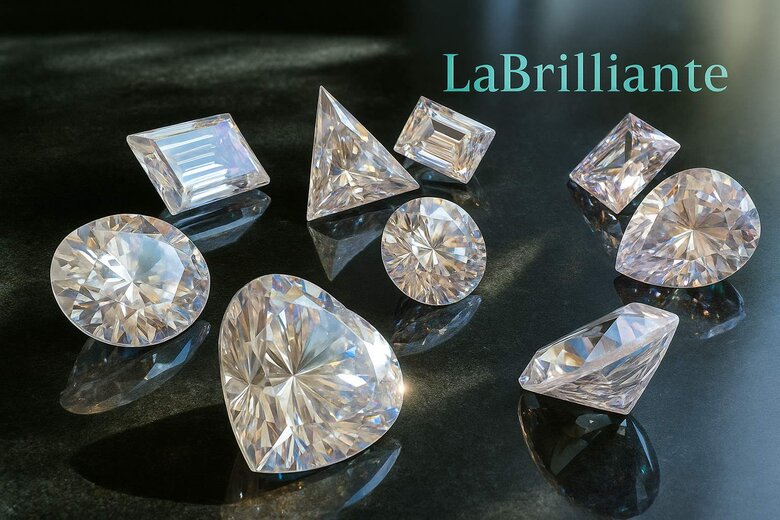
Optimize Budget with Smart Shape Choices
Princess cuts deliver exceptional value—brilliant-cut sparkle at 20-25% discounts to rounds plus affordable standard settings. Smart carat selection amplifies savings further.
Target weights like 0.90 or 1.80 carats instead of round numbers like 1.00 or 2.00. This strategy works especially well with fancy shapes where length and width measurements matter more than specific weights. You'll save significantly while maintaining visual equivalence.
Color and clarity flexibility increases with brilliant-cut fancy shapes versus step cuts. Ovals and cushions mask slight color variations obvious in emerald cuts, enabling G-H selections over D-F grades without visual compromise. VS2 clarity performs excellently in brilliant cuts while step cuts typically require VVS2 minimum.
Multi-stone pieces multiply savings opportunities. Tennis bracelets with princess cuts cost substantially less than rounds of equivalent total weight. Three-stone rings mixing shapes—oval centers with pear sides—reduce costs while creating impossible-with-rounds designs.
Custom cutting at Labrilliante enables budget optimization through precise specifications, helping clients achieve desired visual results while controlling costs across all 4Cs parameters.
Frequently Asked Questions
IGI specializes in lab diamond certification with reports designed specifically for laboratory-grown stones and faster 7-10 day processing. GIA applies traditional protocols with 2-3 week processing times, offering decades of grading prestige but less specialized detail for lab diamonds.
Round diamonds cost 20-30% more due to cutting waste, not superior optics—rounds lose about 50% of rough material during production compared to 25-30% for fancy shapes. This manufacturing reality creates permanent price advantages for fancy shapes without compromising visual performance.
Elongated shapes like ovals, marquise, and pears appear larger per carat than rounds due to greater surface area and finger coverage. A 1.50-carat oval with 1.40 ratio appears equivalent to a 1.75-carat round while costing 20% less.
Ovals perform best at 1.35-1.50 ratios, marquise at 1.85-2.10 ratios, and pears at 1.45-1.75 ratios. Cushion cuts offer flexibility from 1.00 (square) to 1.30 (rectangular), while emerald cuts work best between 1.30-1.60 ratios.
Rounds traditionally maintain stronger resale values and broader market appeal, making them safer long-term investments. However, this gap has narrowed significantly as fancy shapes gain popularity, with ovals dominating 35% of 2024 engagement ring purchases compared to 28% for rounds.
Brilliant-cut fancy shapes like ovals and cushions can accommodate VS2 clarity without visible inclusions, while step cuts like emerald and asscher typically require VVS2 minimum due to their "hall of mirrors" faceting that reveals inclusions more readily.
Target weights like 0.90 or 1.80 carats instead of round numbers like 1.00 or 2.00 to save significantly while maintaining visual equivalence. This strategy works especially well with fancy shapes where length and width measurements matter more than specific weights.
Rounds, ovals, and cushions fit standard mountings, while marquise and pear shapes need custom work adding 10-15% to total costs. East-west settings for elongated shapes create contemporary looks while protecting pointed ends but sacrifice some finger coverage versus vertical orientations.


